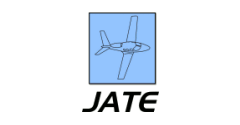Abstract
In the United States, over 2,400 of the 2,941 non-primary National Plan of Integrated Airport System airports have limited means of establishing operations counts due to lack of available personnel. Precise counts of airport operations are helpful for allocating airport improvement funds, as well as for local and system planning. An emerging technology utilizing ADS-B position data to calibrate signal strength received from Mode C transponders, thereby capturing location information from over 90% of the aircraft operating in the National Airspace System, has successfully estimated operations counts at these non-towered airports with reasonable levels of accuracy. This paper evaluates the impact of further calibration of the model using an atmospheric pressure-based calibration method to improve the accuracy of operations counts. Over 10 million aircraft transponder records collected during 58 days at Purdue University Airport and Terre Haute Regional Airport were analyzed. Uncorrected operations counts and corrected counts using atmospheric pressures averaged both monthly and daily were compared with those obtained from tower-reported figures from the Air Traffic Activity Data System (ATADS) database. The overall accuracy of operations counts from uncorrected heuristics ranged from 5.5% to 13.6% as compared to ATADS over different time periods ranging from 55 to 58 days. Incorporating monthly and daily average pressures improved the count accuracy from 3.2% to 8.7% and from 2.6% to 9.3%, respectively. The test results suggest that the barometric correction method using monthly average pressures results in a modest improvement in overall percentage error and mean average error over the uncorrected method.
Recommended Citation
Mott, John H.; Yang, Chuyang; and Bullock, Darcy M.
(2020)
"Atmospheric Pressure Calibration to Improve Accuracy of Transponder-Based Aircraft Operations Counting Technology,"
Journal of Aviation Technology and Engineering:
Vol. 9:
Iss.
2, Article 4.
Available at: https://doi.org/10.7771/2159-6670.1222



